Financial institutions, especially banks and crypto platforms, are undergoing significant transformation in numerous ways. The surge in cyberspace technologies has paved the way for potential criminals and fraudsters to commit illicit economic practices through cybercrimes. They exploit the security loopholes of financial organizations and engage in money laundering and other heinous crimes such as terror financing. A bank must protect itself from unintentionally becoming a channel of illegal financial flows. Thus, it needs to streamline its risk-based transaction monitoring mechanism.
KYC & Enhanced Due Diligence
The know-your-customer process is mandatory in financial and non-financial companies or organizations. However, it holds a significant role in the banking sector. Customers’ identity verification is a necessary step during onboarding, and it allows banks to know the potential risk any client poses. The ongoing or continuous monitoring, also known as perpetual KYC, is directly linked to risk-based transaction monitoring. This is because it lets banks perform strict customer surveillance if any unusual activities, such as transactional anomalies, are suspected.
The enhanced due diligence process entails rigorous real-time screening of suspicious customers against lists of politically exposed persons (PEPs), adverse media reports, and grey and black lists of inter-governmental watchdogs like FATF. It also assigns risk scores to the customers posing significant threats of money laundering or terrorism financing. Similarly, high-risk transactions are unusual credit card payment patterns, having possible linkages to fraud and criminal networks or trails to illicit sources of wealth such as laundered money.
AML/CFT Transaction Screening System
Risk-based transaction monitoring refers to assessing customers’ transactions continuously or at regular intervals in real time. It is carried out to detect red-flag transactions or extremely suspicious funds transfers. According to an estimate, payment fraud is anticipated to cost 40.62 billion US dollars in 2027. Therefore, banks need to align their transaction screening system with stringent global and domestic financial regulatory regimes to avert the possibility of chargeback fraud and illicit monetary practices.
You Can Read this simler Article: Intelligent Character Recognition
Furthermore, risk-based transaction monitoring is essential for international anti-money laundering and counter-terrorism financing regulatory compliance. For instance, the recommendations put forth by Financial Action Task Force (FATF) obligate organizations to integrate effective transaction monitoring systems in their due diligence measures. Hence, it proves efficient for banks in ensuring AML/CFT compliance and preventing security and financial losses.
Real-time Transaction Reporting System
Real-time payment methods have transformed the global financial system drastically. They saw a rise during the worldwide pandemic as everyday life was halted, and every sector ensured customer convenience through digital solutions. The digital banking system has also gained significant prominence in recent years. The process has been gradual, and the banking sector continues to adopt advanced and upgraded tools for seamless customer onboarding, risk-based transaction monitoring, and AML/CFT compliance.
Transaction reporting differs from trade reporting. The latter is associated with ensuring transparency in the market, and its details are disclosed to the public. In contrast, the former is conducted confidentially, and its target audience is the regulatory bodies. Financial institutes like banks require automated and swift real-time transaction reporting systems to understand complex transactional environments. It also enables them to detect minor changes in transaction patterns and initiates immediate responses.
Transaction Screening Solution Providers
Various providers offer high-tech solutions, such as transaction screening solution to organizations that seek to enhance their operations. Financial institutes, especially banks, should adopt such software solutions. However, they must choose an authentic and reliable service provider for risk-based transaction monitoring. Effective transaction monitoring solutions must:
- Immediately flag suspicious activities after detection
- Instantly initiate a Suspicious Activity Report (SAR)
- Report to the relevant authorities for further investigation and review
To perform these tasks effectively, providers need to employ powerful risk-based strategies and constantly update algorithms to detect changing transaction patterns. Likewise, banks should ensure that they rely on accurate solution providers for effective and prompt risk-based transaction monitoring and AML/CFT compliance.
Payment Screening Process
Risk-based transaction monitoring and payment screening vary slightly from each other. The former refers to the real-time or retroactive assessment to detect and mitigate the chances of fraud and money laundering. Contrarily, the payment screening process is affiliated with customers’ identity verification focusing more on AML/CFT regulatory compliance rather than fraud deterrence. It involves scrutinizing the inbound and outbound transactions and evaluating the source of funds to analyze the risk level associated with a customer. Its primary objective is to identify the legitimacy and legality of customers’ credentials.
Moreover, it emphasizes several elements, such as the type of device the sender and receiver used, geographical location, and checks against sanctions lists. According to the mentioned factors, banks can initiate a prompt investigation if a customer is flagged as suspicious. Payment screening is conducted at specific times, for instance, during the initial customer onboarding process and during updating the ID information.
To Sum It Up
In sum, risk-based transaction monitoring is crucial for banks to detect anomalies in financial activities and flag suspicious customers. It allows them to perform vigilant tracking of customer accounts. Most significantly, it enables them to comply with the anti-money laundering and counter-terrorism financing laws.
Also, Read The Following: today wordle


